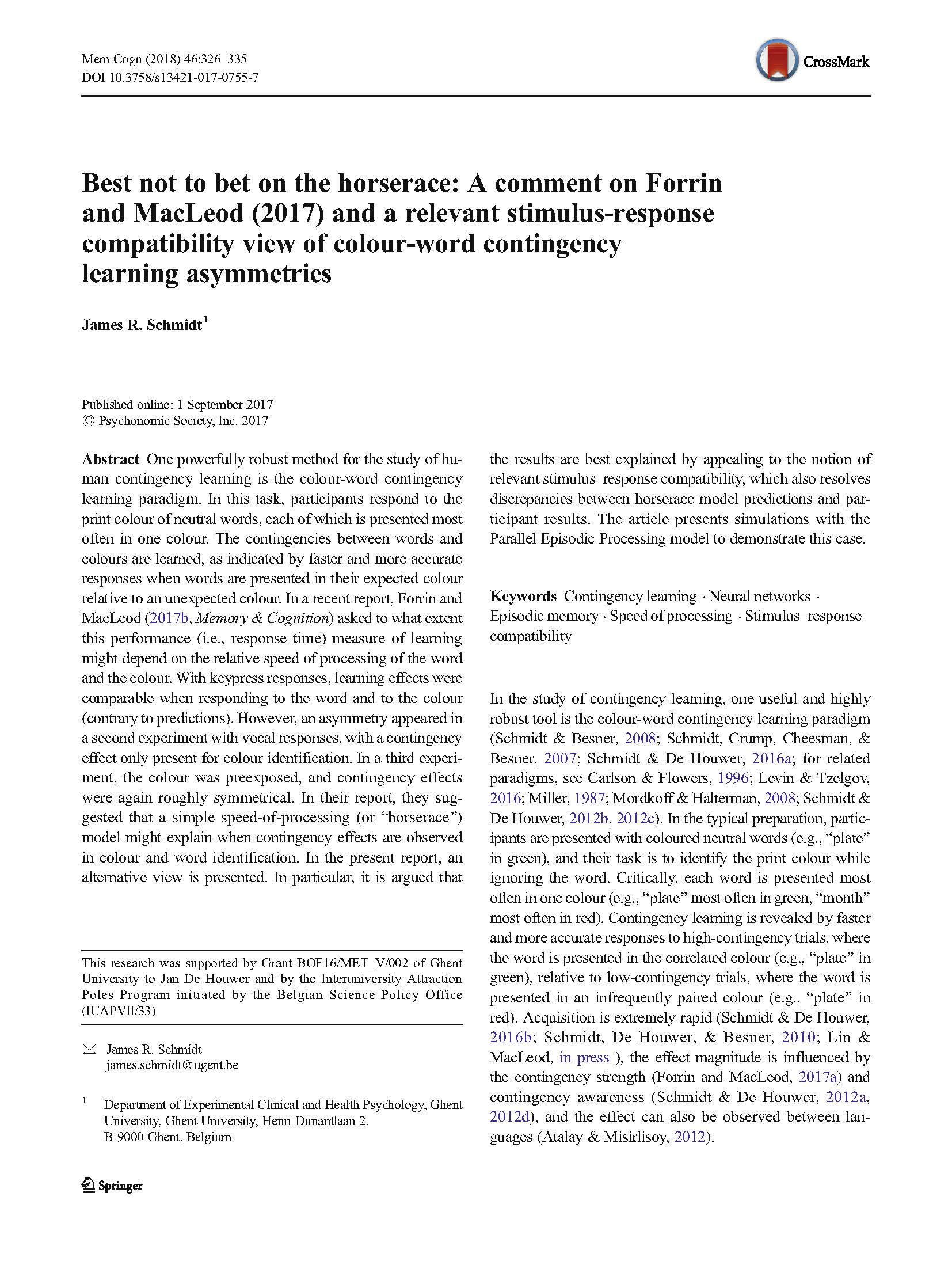One powerfully robust method for the study of human contingency learning is the colour-word contingency learning paradigm. In this task, participants respond to the print colour of neutral words, each of which is presented most often in one colour. The contingencies between words and colours are learned, as indicated by faster and more accurate responses when words are presented in their expected colour relative to an unexpected colour. In a recent report, Forrin and MacLeod (2017b, Memory & Cognition) asked to what extent this performance (i.e., response time) measure of learning might depend on the relative speed of processing of the word and the colour.With keypress responses, learning effects were comparable when responding to the word and to the colour (contrary to predictions). However, an asymmetry appeared in a second experiment with vocal responses, with a contingency effect only present for colour identification. In a third experiment, the colour was preexposed, and contingency effects were again roughly symmetrical. In their report, they suggested that a simple speed-of-processing (or Bhorserace^) model might explain when contingency effects are observed in colour and word identification. In the present report, an alternative view is presented. In particular, it is argued that the results are best explained by appealing to the notion of relevant stimulus–response compatibility, which also resolves discrepancies between horserace model predictions and participant results. The article presents simulations with the Parallel Episodic Processing model to demonstrate this case.
Best not to bet on the horserace: A comment on Forrin and MacLeod (2017) and a relevant stimulus-response compatibility view of colour-word contingency learning asymmetries
